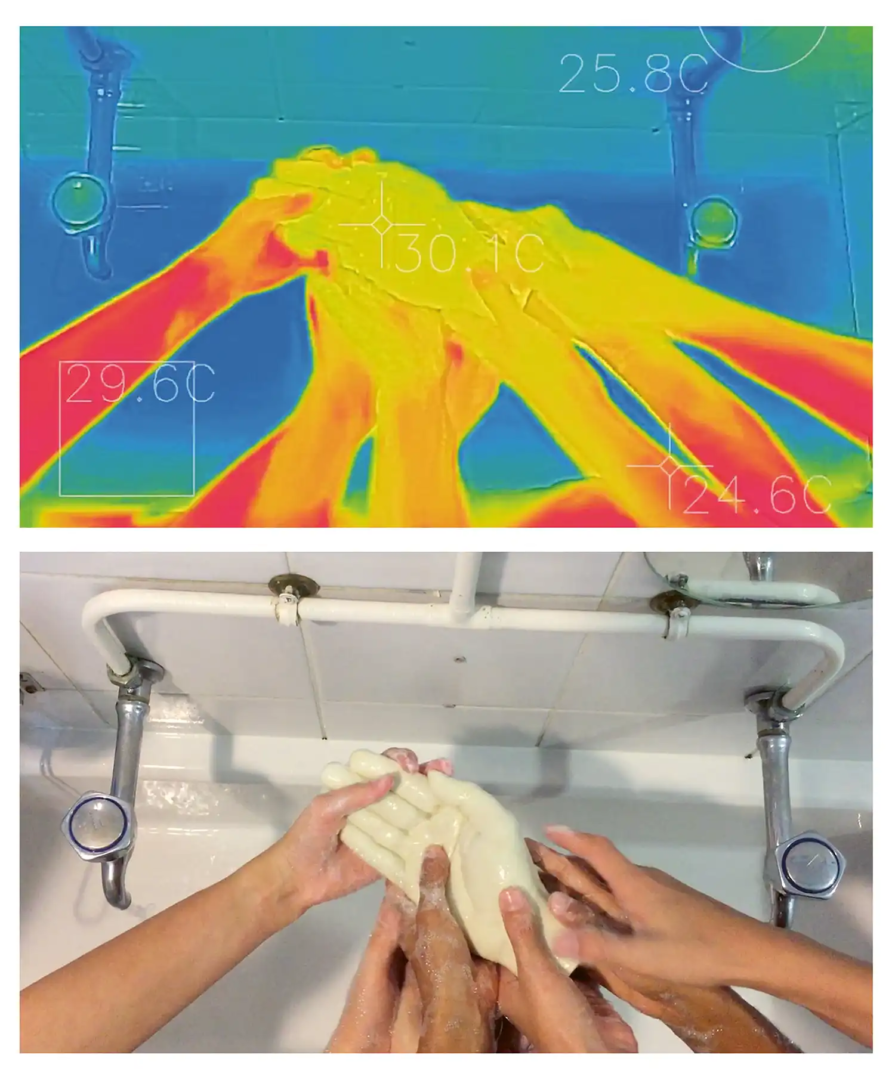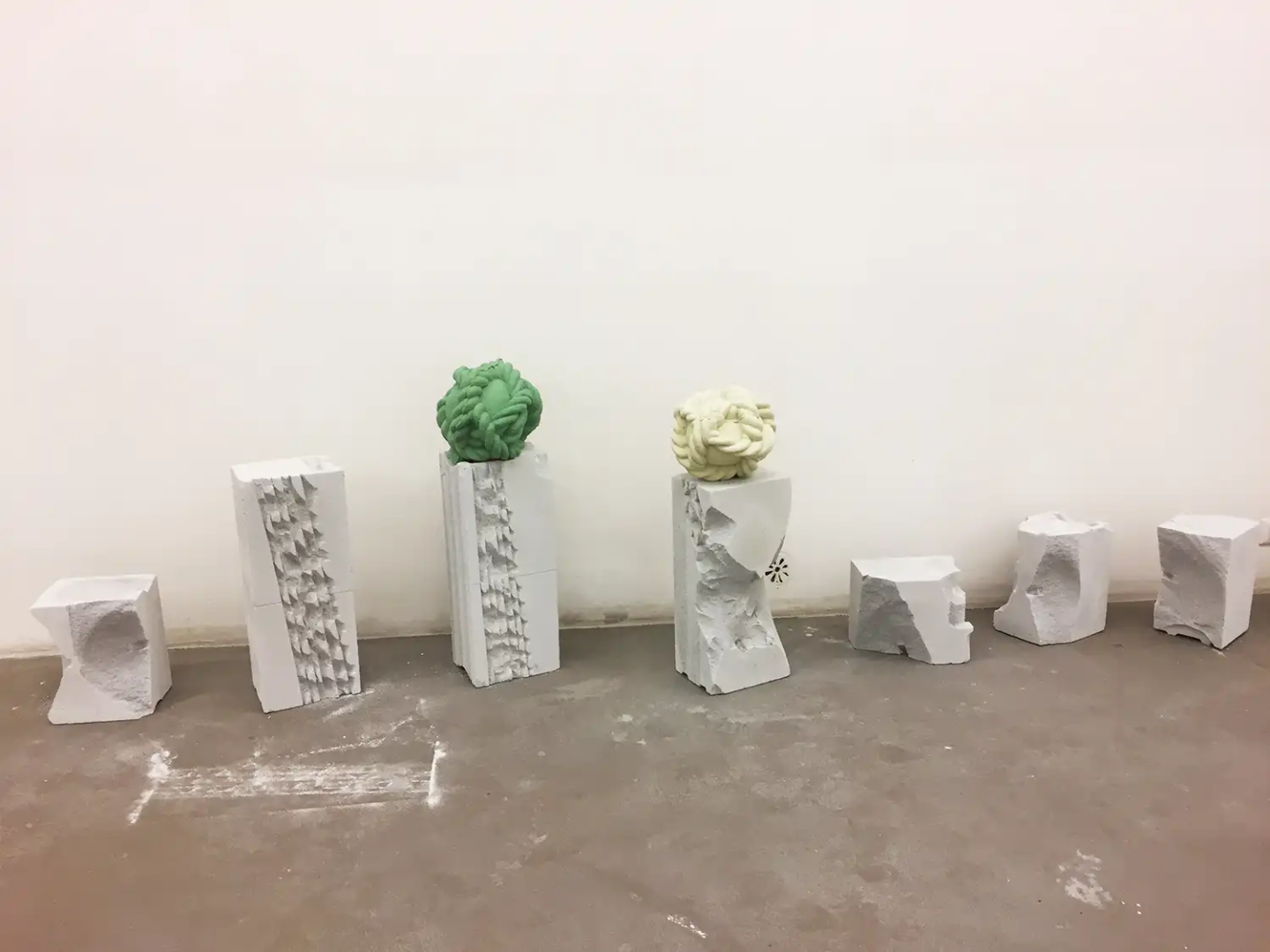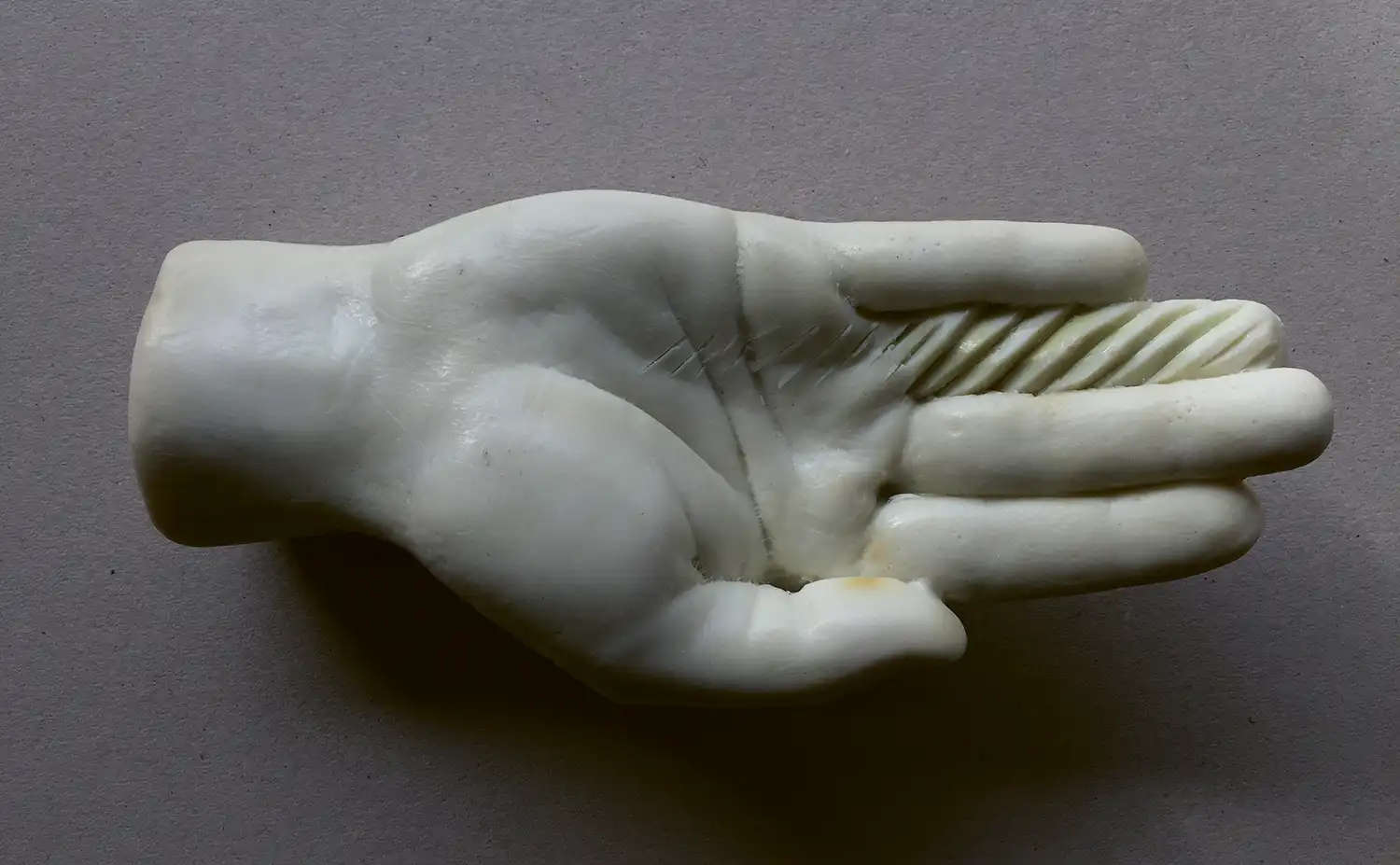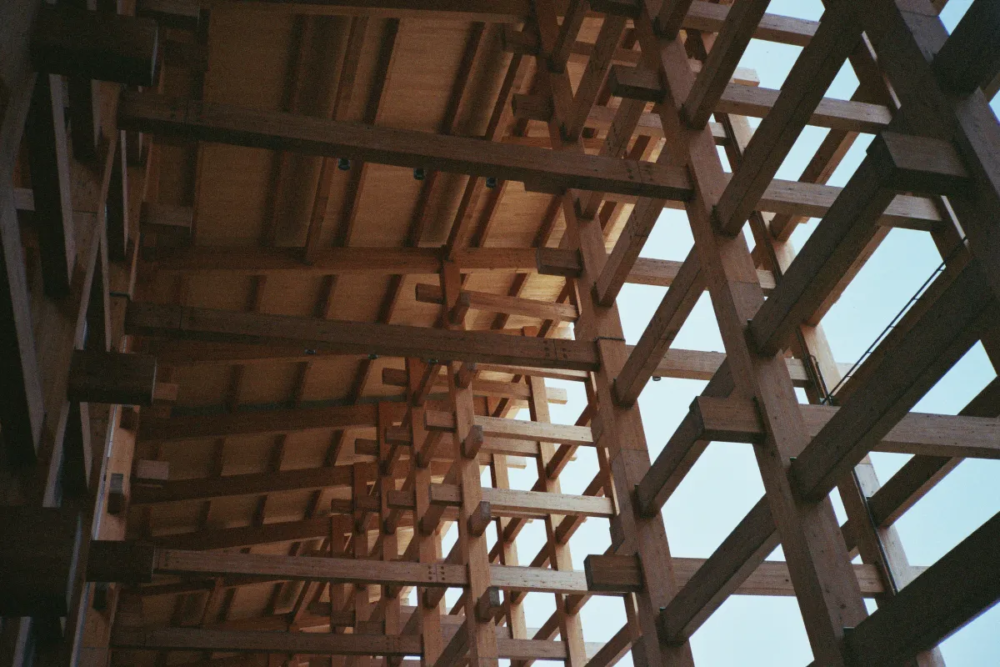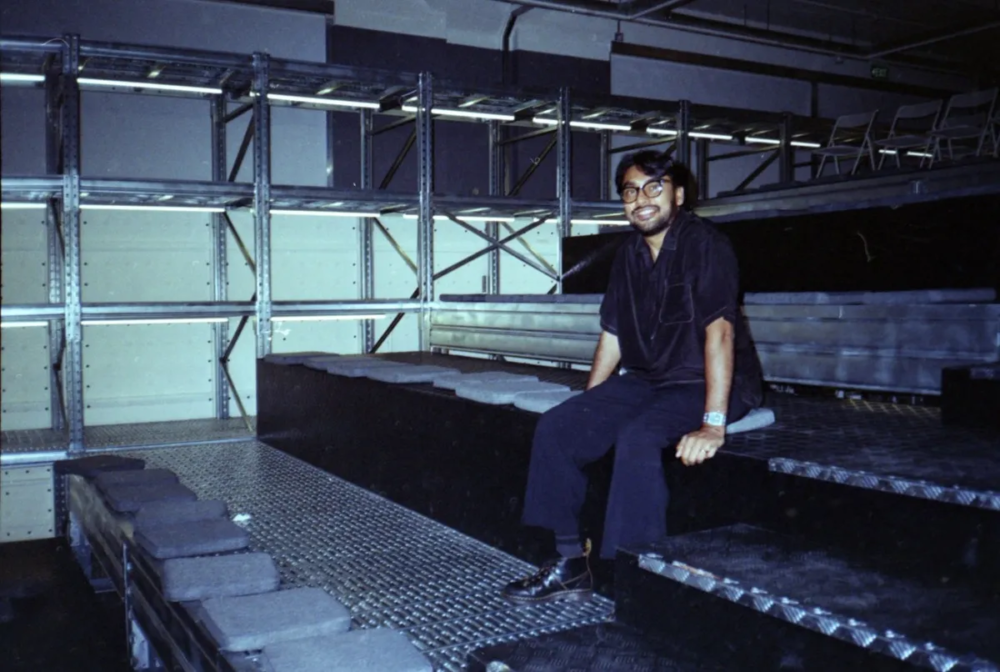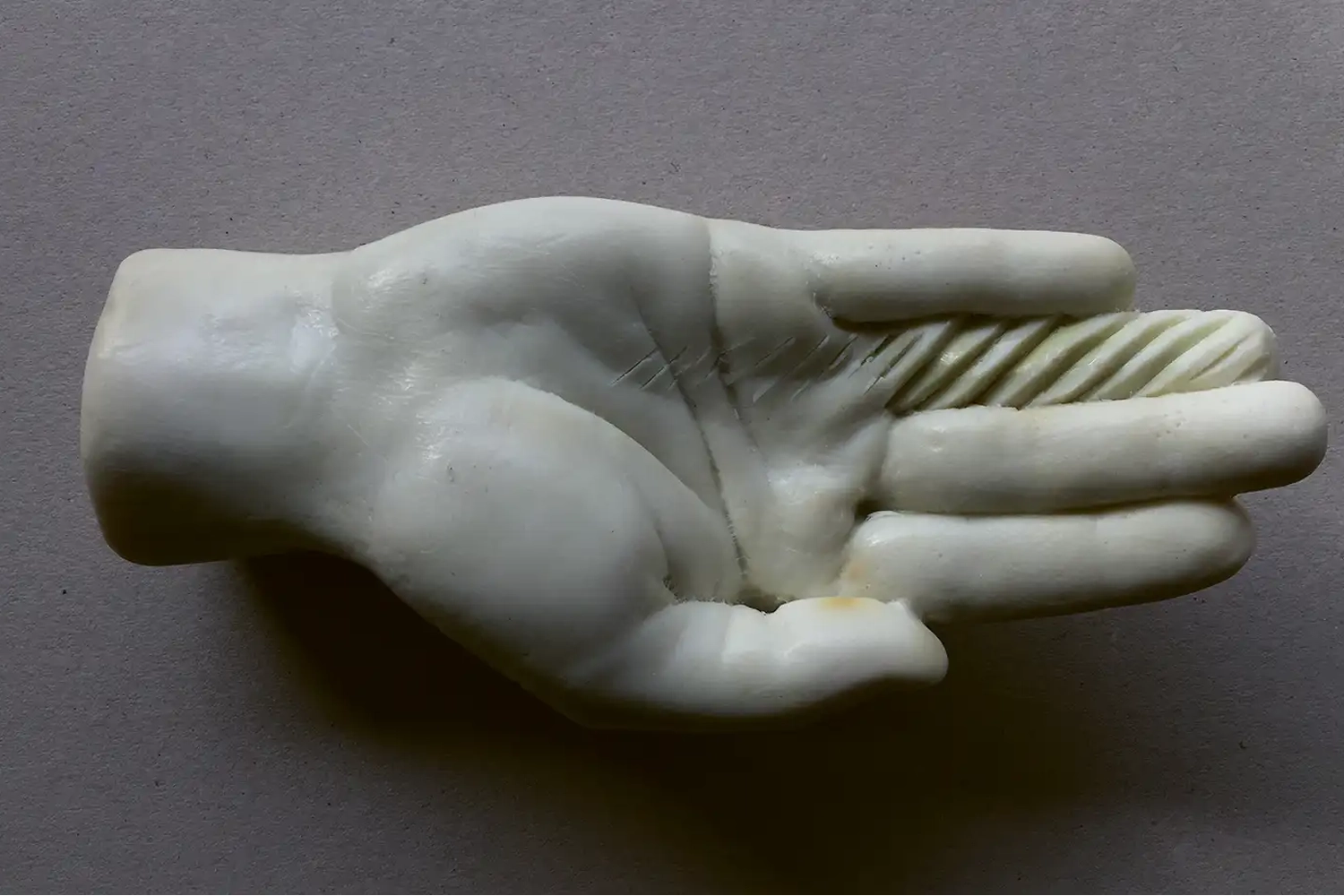
Mircea Cantor and the Aleppo Soap – from destruction to the UNESCO list
The destruction suffered by Aleppo, migrations, bombings, and in the midst of all this Mircea Cantor discovered a humble material: Aleppo Soap, which in 2024 was inscribed on the UNESCO World Heritage list
The act of washing as an artistic gesture and the collective dimension of ritual
I have washed myself with a soapy something, that is a work by Mircea Cantor. “A rite of communion. I made a soap cast of my hand and gave it to four children who in turn washed their hands. They staged a choreography using my soap hand. Not just a gesture of absolution, like Pontius Pilate. In that same exhibition there was a work entitled Fontana delle Mani. A wooden sculpture with a rope around it, inside of which there was a video projected on a screen with real water flowing. The video shifted from a normal vision to a thermal one. You could see the temperature of the children’s hands washing with the soap hand, in the air.”
Mircea Cantor, born in 1977 and based between Paris and Cluj, is a multimedia artist, author of textual works, sculptures and photographs. He is best known for his video and mixed-media installations with metaphorical impact. Cantor’s childhood, shaped by life in a communist country undergoing political and institutional transition, together with his personal memories, is the starting point of many works. His poetics follow a formal research line that addresses complex themes, suspended between reality and another dimension.
Aleppo Soap as a symbol of migration, cultural memory and UNESCO heritage
About ten years ago, during one of his creative journeys, Cantor explored a material from the Middle East: soap, and in particular the ancient Syrian Aleppo soap, traditionally produced in the caravanserais of the city’s souks.
“It was a daring gesture in the context of 2015–2017, during the migratory wave from Syria, devastated by war, toward Europe. As an artist I was not interested in the political aspect or in the controversies raging at that time. I told myself: this is incredible. We are talking about the destruction suffered by Aleppo, migrations, bombings, and in the midst of all this I discovered a humble material: Aleppo Soap, which in 2024 was inscribed on the UNESCO World Heritage list.”
Once again, a leap into an ancestral past, flowing and timeless. Not a relationship tied to what has been lost, but an element to which life can be given back through a creative act.
“The aim is to face challenges linked to matter, to thought, to the configuration of a new artistic language. Soap, like thought, is full of symbols. Think about the meaning of washing, of purification from sins. Concepts that can be connected to humble and daily rituals of cleansing, repeated since time immemorial. A substance already in use in the Roman Empire. Then it traveled across the Mediterranean, without knowing it was made with olive oil, laurel berry extract, and soda. When it arrived in Marseille after the Crusades, it entered the genealogy of the great Mediterranean ports. From there Marseille Soap was born, and it had commercial success. Soap is everywhere, ubiquitous, even liquid. For me it was interesting to work with Syrians who had lived in France for a long time and had a soap company in Burgundy.”
Aleppo Soap, green in color and, after at least twelve months of maturation in tower-shaped scaffolding in the open air turning golden, encapsulated this circulation of ideas and embodied a movement of transformation.
Your Ruins Are My Flag and the use of soap as material for ephemeral monuments
After his solo exhibition at Fondazione Giuliani in Rome in 2017, entitled Your Ruins Are My Flag, Cantor exhibited part of this work at FIAC in Paris with the Roman gallery Magazzino.
Sculptural installations alternated with more intimate works that condensed the same content. The aim was to establish a dialogue between the notion of debris and ruin with a different materiality: Aleppo Soap.
Cantor superimposed two opposing approaches: destruction and decay with cleanliness and regeneration, self-care and vitality. The twisted soap column, destined to be consumed, replaced the stone designed to endure. The shaft, upright or fractured, became the leitmotif of the exhibition.
And above all, that strong fragrance of Aleppo Soap, which released its evocative power and clung to visitors.
Iconoclasm, void and zero point: from the Buddhas of Bamiyan to contemporary art
The idea of ruin, but a vital ruin. Fragments of architecture embodied in soap. A memory subverted.
“It was not the poetics of ruin in a romantic sense, but rather identification with a flag, with a sign. A modern structure with the trace of time. This is part of aesthetics. I was not interested in the aesthetics of ruin. It had nothing to do with Chateaubriand or with the rêveries of German romantics like Heine.”
“I was struck by the destruction, the eradication of the Buddhas of Bamiyan in March 2001, ordered by Mullah Omar. I told myself that the Taliban, after all, had fully understood the performative aspect. They responded with emptiness. That is what they wanted to show. A rupture with the West as well. It was a statement without any possibility of misunderstanding. A universal message contained in the bare cave where two colossal sacred representations, 55 and 38 meters high respectively, once stood.”
What remains afterwards? Does only the gesture remain? Or is there a drift towards an evolution, a different dimension?
“There is a poem by a Romanian poet, about the “perfect cube”. He describes how to sculpt a perfect cube carved from a marble sphere, polished with one’s own blood and tears. Then he asserts: destroy the cube. Because it is the gesture that counts, not the object itself. Everyone will admire the cube, they will say it was perfect. In reality, the intention to create something that could have been perfect is the matter. It is with ruins. It is the idea that something has existed that counts.”
Mircea Cantor and Hermès: from Saut Hermès 2025 to the Oriental Cycle of Horses
For the Saut Hermès 2025, the equestrian competition at the Grand Palais in Paris, Cantor conceived a series of ink drawings that captured the energy of the jump, the tension and movement of horse and rider.
“Hermès invites artists to create visuals for campaigns or, in this case, for the Saut Hermès. I saw the posters, the images, all the graphic elements of the project. I didn’t know what they were for. The thing about the encounter with Hermès was the spontaneity of my gesture. They appreciated that it was instinctive, a movement that cannot be captured or stopped. Another passion of mine is the Oriental Cycle of Horses, the entire animal world and war, horses, dogs within the time of a conflict. When I showed it to them, they said: propose something for the campaign.”
Neolithic art and the universal origins of European culture
“Now I am working on a project on Neolithic art. I will collaborate with a museum in Romania that holds the oldest Neolithic artifacts in Europe. Objects seven thousand years old, statuettes and other finds. There is “The Thinker”, a small clay sculpture that I will also present. A figurine that has an intense and basic appearance.”
“Elements that are part of my background. When I interpreted the Lady Dior Bag last year, I was inspired by a jacket of my grandmother’s, by ornamental motifs of traditional folk garments, superimposed on the geometric grid of the gardens of Versailles. This time I am going even deeper. It is something almost universal, because seven thousand years ago there was no notion of nation, no concept of national identity. It was a European culture par excellence. One of the cradles of civilization, that was the starting point of my reflection.”
Cesare Cunaccia
